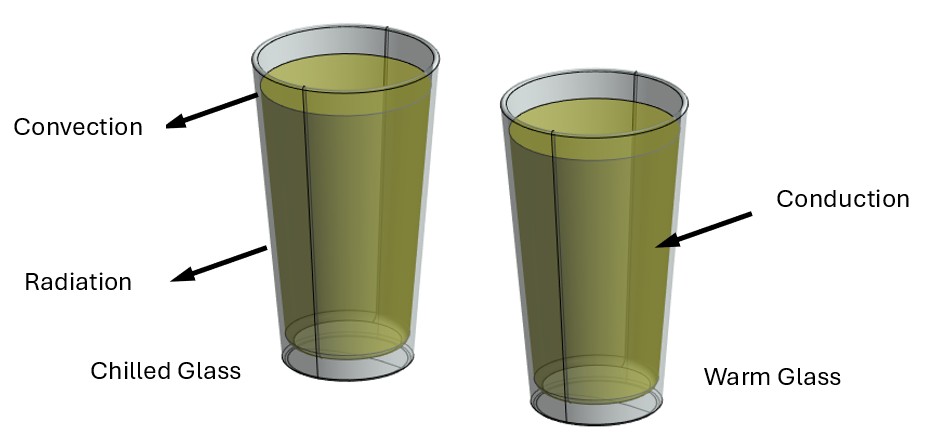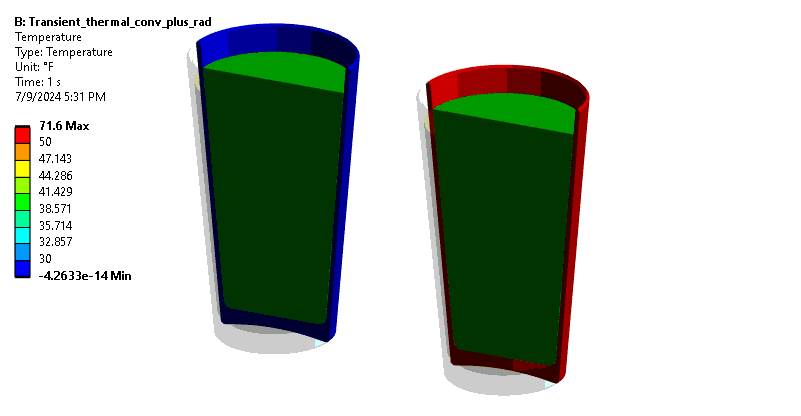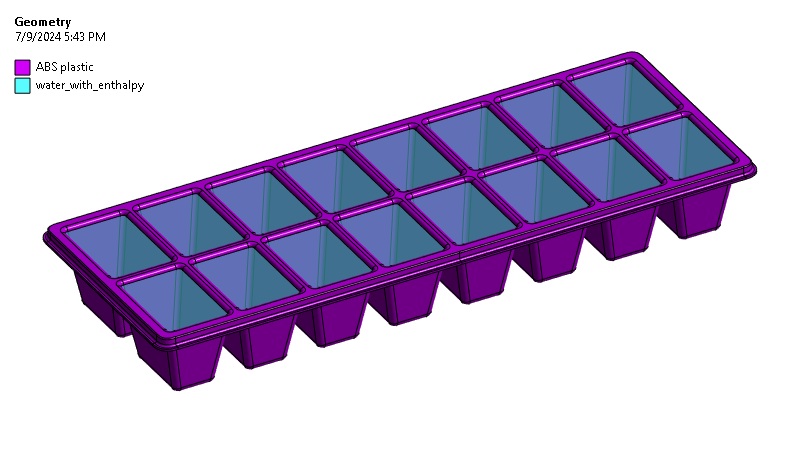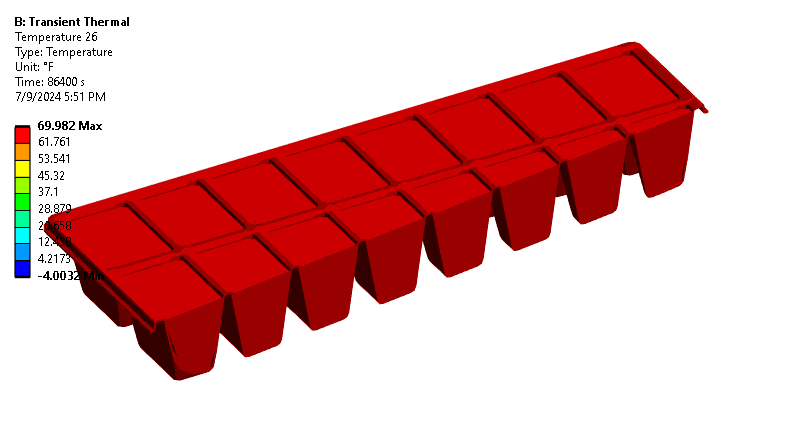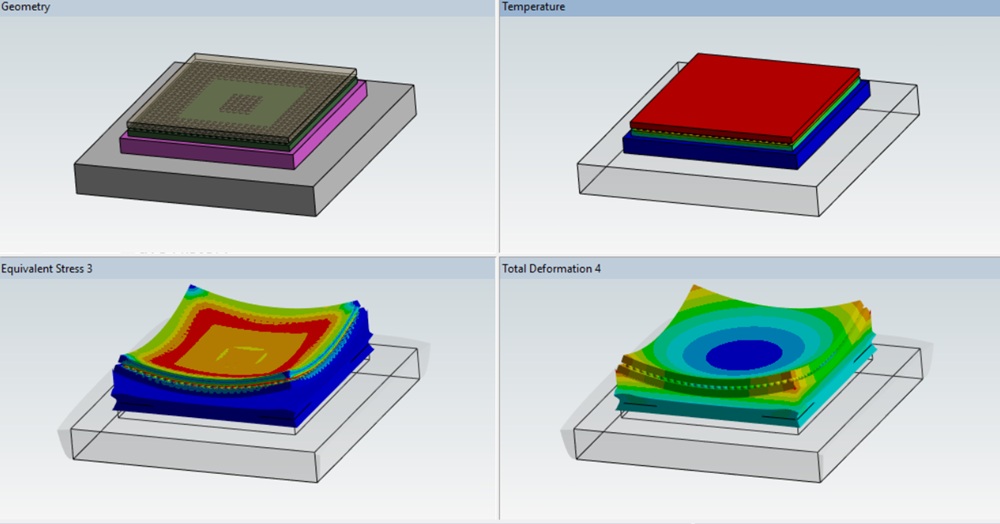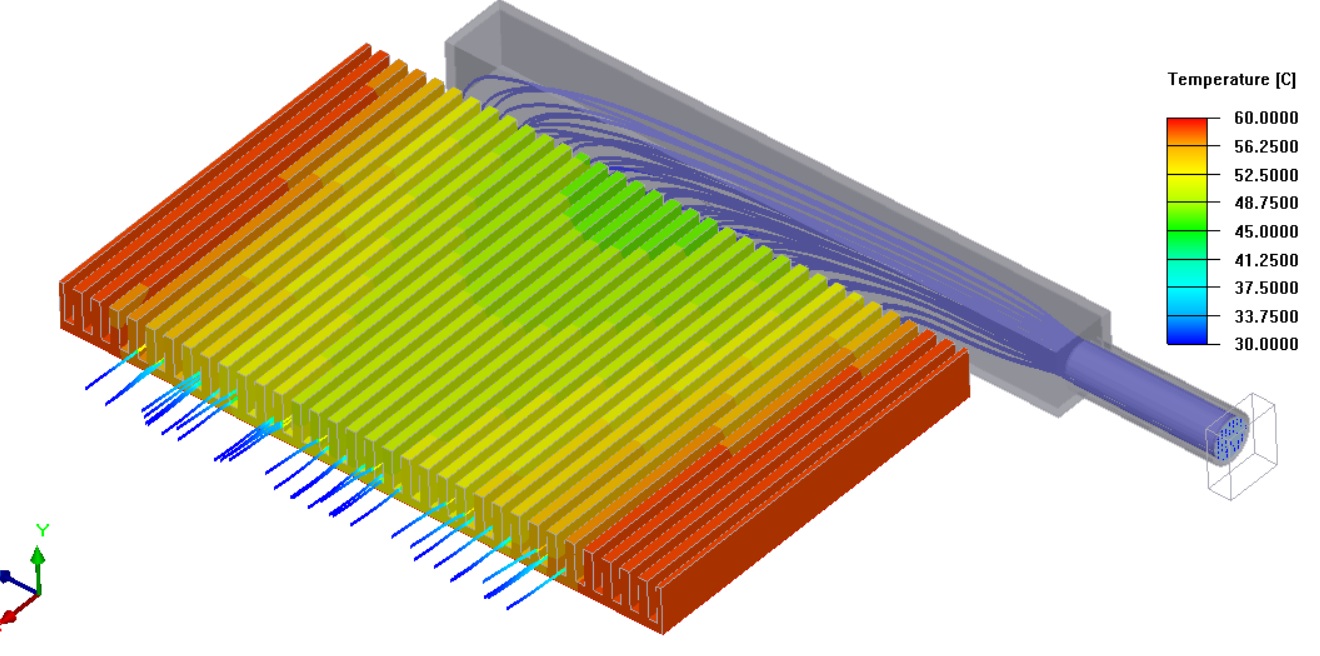Thermal Analysis and Simulation for Effective Thermal Management
Finite element analysis (FEA) studies frequently focus on thermal response. Thermal simulations can be integrated with structural simulations to provide detailed temperature maps, heat flow vectors as well as thermally induced strains and resulting thermal stresses.
Modern engineering is increasingly focused on thermal management, particularly in light of the ongoing push toward electrification. Temperature is frequently a primary concern for applications such as printed circuit boards, electronics enclosures, batteries and under-hood electronic sensors.
Our Thermal-Structural simulation capabilities include conduction, forced convection, natural convection, internal (cavity) radiation, conjugate heat transfer and thermally induced stress.


